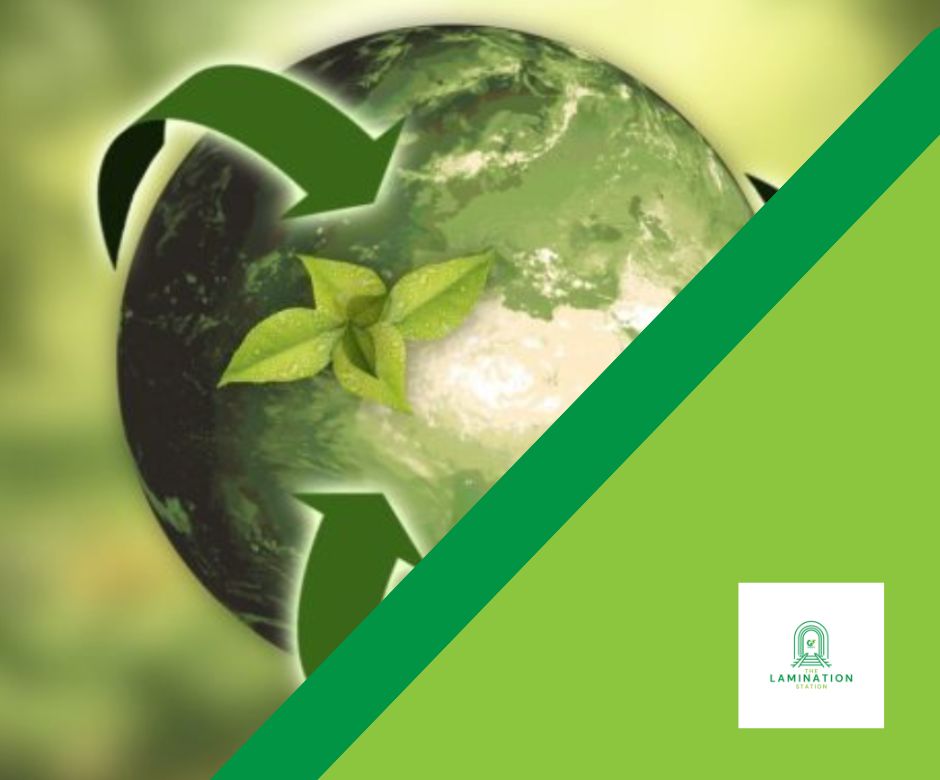Eco-Friendly Lamination Films
Gif Products are now offering a range of BOPP WET PIR and THERMAL PCR lamination films. Our sustainable range of lamination films is made from 30% PIR or PCR content and 70% virgin PP (polypropylene) content.
These sustainable film options are commonly used in the printing industry to enhance the durability and appearance of printed materials. PIR stands for Post Industrial Recycled, and PCR stands for Post Consumer Recycled, making these films an excellent choice for any sustainability-conscious company. Not only are these films produced using more environmentally friendly materials and processes, but polypropylene is also known for its high-quality finish. In this blog post, we will discuss Wet PIR lamination films available in gloss and matt, and Thermal PCR Gloss and Matt lamination films, how they have become popular in the printing and packaging industry, and how they can reduce the impact on the environment while promoting sustainable practices.
Wet and Thermal Lamination Processes
Wet lamination involves applying a layer of adhesive to the film and then bringing the film and substrate together via a pressure nip system. Thermal lamination involves activating (via a heat roller) a thermal adhesive layer and then bringing the film and substrate together via a pressure nip system.
Finishes: Gloss and Matt
These PIR wet lamination films and PCR thermal lamination films are available in either a high gloss finish, which provides excellent clarity and slip properties, or a matt finish, which gives the finished substrate a more sophisticated or subdued look. Both finishes are commonly used for items like book covers, brochures, business cards, packaging, postcards, and labels. These films substantially increase the longevity of the finished products while also offering protection against moisture and dust, making them a popular choice for all printing, packaging, and labelling applications.
Sustainability Benefits
-
Made from Recyclable Materials
PIR (Post Industrial Recycled) Polypropylene is taken from manufacturing production lines, mechanically or chemically cleaned and processed, then extruded with virgin PP. PCR (Post Consumer Recycled) Polypropylene uses waste content that has served its original purpose and is collected, recycled, and processed before being extruded with virgin PP. Using recyclable materials reduces the carbon footprint of the industry and promotes sustainable practices.
-
Reduction in Waste
PIR/PCR lamination films provide excellent protection to printed and non-printed materials, reducing the need for reproduction and ultimately reducing waste. By prolonging the shelf life of a product, these films reduce the amount of waste generated by the industry and promote sustainable practices.
-
Circular Economy
PIR/PCR lamination films are designed to minimise waste and maximise the use of recycled materials. By using post-industrial recycled and post-consumer recycled materials, they help reduce the demand for virgin materials and the associated environmental impacts of manufacturing them. Implementing circular economy principles helps conserve resources and reduce waste.
-
Lower Carbon Footprint
PIR/PCR BOPP lamination films have a lower carbon footprint compared to other laminating films, such as PVC films. Their production emits fewer greenhouse gases, reducing the environmental impact.
Conclusion
Gif Products’ range of BOPP PIR and PCR lamination films are an excellent choice for companies looking to promote sustainability and reduce their environmental impact. The use of post-industrial recycled and post-consumer recycled films makes these films an environmentally friendly alternative to traditional laminating films. These films continue to offer superior protection and a high-quality finish to printed materials, reducing the need for reprinting and ultimately reducing waste. By choosing PIR/PCR lamination films, companies can promote sustainable practices, conserve resources, and minimise their carbon footprint, all while enhancing the durability and appearance of their printed materials.
To find out more about Gif Products’ Lamination Films, CLICK HERE to contact us.

